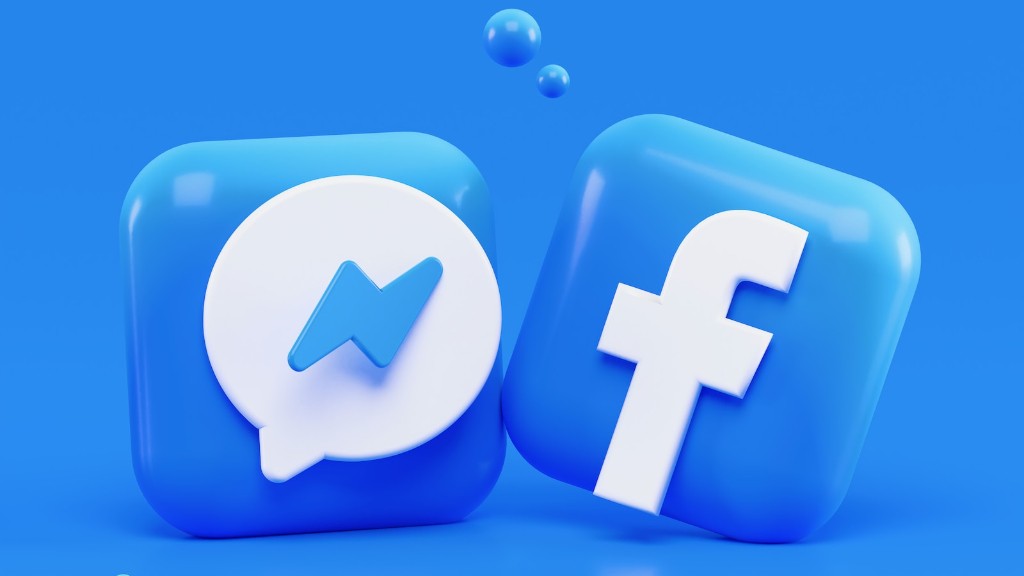A disruptive marketing strategy is a campaign or initiative undertaken by a company to create a new market for a product or service. It is a means of introducing a new product or service into an existing market where there is little or no competition. Disruptive marketing strategies are typically used by startups or companies looking to gain a competitive advantage.
Disruptive marketing is a strategy employed to create a new market for a product or service. Disruptive marketing targets non-consumers of a product or service and seeks to convert them into users. This strategy is often employed by new businesses seeking to enter established markets.
What is disruptive marketing examples?
Netflix and other streaming services have disrupted the traditional video rental and cable TV industries by providing a more convenient and affordable alternative to these services. While Netflix was not created with the intention of disrupting these industries, it has had a major impact on them nonetheless. In a similar vein, Apple Music has disrupted the music industry by providing a more convenient and affordable alternative to traditional music services.
A market disruption is a sudden and dramatic change to the way that markets operate. This can be caused by a number of different factors, including economic recession, political upheaval, or natural disasters. Market disruptions can have a significant impact on businesses and investors, often causing widespread panic and leading to heavy losses.
What are the 4 types of marketing strategies
The four Ps of marketing are product, price, place, and promotion. They are an example of a “marketing mix,” or the combined tools and methodologies used by marketers to achieve their marketing objectives.
Product refers to the physical goods or services that a company offers for sale. This can include everything from physical products like clothing or electronics to services like haircuts or car repairs.
Price is the amount of money that a customer must pay to purchase a product or service. Pricing strategy is a critical aspect of marketing, as it can impact both demand and supply.
Place is the location where a product or service is available for purchase. This can be either physical locations like stores or online platforms like websites.
Promotion is the process of marketing a product or service to potential customers. This can be done through a variety of methods, such as advertising, public relations, or social media.
Disruptive marketing methods are important because they help businesses stand out in an increasingly competitive market, with rising customer expectations, and technological innovation. Benefits of disruptive marketing include the ability to take advantage of new opportunities as they come, and to stand out from the competition.
What is an example of a disruptive product?
Netflix is a great example of a company that has successfully used disruptive innovation to gain a foothold in the market. By starting out as a DVD mailout service, Netflix was able to offer a cost-effective and convenient product to an area of the market that was previously overlooked. This allowed them to quickly gain a loyal customer base, which they have then been able to grow by offering additional services such as streaming video.
The trend of people using smartphones instead of laptops and desktops for their computing needs is an example of disruptive innovation. Technological enhancements have enabled cell phones to be equipped with small processors, chips, and software applications that support these functions. This has led to a shift in the way people access the internet and use computing devices.
What are the 4 D’s of disruption?
In the late nineteenth century, Britain underwent a period of rapid economic growth, which led to increased levels of disruption, deprivation, disease and death. These four factors are known as the ‘ four Ds’ of public health.
Today, China is experiencing a similar period of rapid economic growth. However, the country faces a number of challenges in terms of public health. These include a growing burden of chronic disease, rising levels of obesity and a lack of access to quality healthcare.
The Lessons from Britain
There are a number of lessons that can be learnt from Britain’s experience in the late nineteenth century.
Firstly, it is important to invest in public health infrastructure. This includes ensuring that there are adequate levels of staffing, training and resources.
Secondly, it is important to address the underlying social and economic causes of poor health. This includes addressing poverty, inequality and social exclusion.
Thirdly, it is important to focus on prevention. This means investing in measures to prevent disease and promoting healthy lifestyles.
Fourthly, it is important to have an effective system in place to respond to public health emergencies. This includes having a well-trained workforce and effective communication systems.
The “Six Ds of Exponentials” is a framework developed by Peter Diamandis to explain how exponential technologies tend to grow and scale. The six steps are: digitization, deception, disruption, demonetization, dematerialization, and democratization.
Digitization refers to the process of converting an analog signal or physical object into a digital format. This can be as simple as taking a picture with a digital camera, or as complex as using 3D printing to create a physical object from a digital file.
Deception occurs when a technology is initially met with skepticism or disbelief. This is often because the technology is so new or different that it is difficult to wrap our heads around it. For example, when the first cars were invented, there were many people who thought they would never catch on because they were simply too strange and complicated.
Disruption happens when a new technology comes along and upends the status quo. This can be seen with the way that Uber disrupted the taxi industry, or how the internet has disrupted traditional media.
Demonetization occurs when a technology makes a previously paid-for service free. A good example of this is how Skype made long-distance phone calls free, or how
When did disruptive marketing start
Disruptive marketing is a type of marketing that focuses on creating a new market by offering a new product or service. This type of marketing is often used by companies who are looking to enter a new market or who are looking to expand their current market share. Disruptive marketing is often seen as a more risky type of marketing, but it can be very effective if done correctly.
There are three main types of marketing strategies that businesses use to gain an edge over their competitors: cost domination, differentiation, and focus.
Cost domination entails being the low-cost provider in the market. This strategy is often used by businesses that have a high volume of sales and can utilize economies of scale to keep their costs down.
Differentiation is about creating a unique selling proposition that differentiates the business from its competitors. This might involve having a unique product offering, superior customer service, or a differentiated brand.
Focus is about targeting a specific niche or segment of the market and becoming the go-to provider for that particular group. This strategy often requires businesses to have a deep understanding of their target market and what they are looking for.
What are the 5 main marketing strategies?
The 5 P’s of marketing are a crucial part of any successful marketing mix. They are: product, place, price, promotion, and people. By focusing on these five areas, brands can ensure that their marketing efforts are targeted and effective.
Product – This is what you are selling. You need to have a good product or service that meets the needs of your customers.
Pricing – You need to have a price that is competitive and meets the needs of your customers.
Place – You need to have a place where your customers can find you and purchase your product or service.
Promotion – You need to promote your product or service to your customers. This can be done through advertising, marketing, and public relations.
Physical Evidence – You need to have physical evidence that your product or service is of high quality. This can be done through packaging, branding, and design.
People – You need to have a team of people who are passionate about your product or service and who are experts in their field.
Processes – You need to have a process in place that is efficient and effective in delivering your product or service to your customers.
What are the three types of disruptive business models
The 9 Disruptive Business Models for Companies are:
1. Freemium Model
2. Subscription Model
3. Free Offerings Marketplace Model
4. Sharing Economy – Access-over-Ownership Model
5. Renting & Leasing
6. User Experience Premium
7. Pyramid Model
8. Ecosystem – Create your own ecosystem
9.
These business models are disruptive because they challenge the status quo and traditional ways of doing business. They offer new and innovative ways to create value for customers and to generate revenue. Each of these models has the potential to be hugely successful, but it will require a lot of hard work, creativity, and dedication to make it happen.
1. Freemium Model
The freemium model is one of the most commonly used business models in the tech industry. It involves offering a basic version of a product or service for free, with the option to upgrade to a premium version for a fee. This model has been incredibly successful for many companies, such as Dropbox, Evernote, and Spotify.
2. Subscription Model
The subscription model is another popular business model, which involves charging a recurring fee for access to a product or service. This
Christensen’s Disruptive Innovation Theory is one of the most influential and widely-cited ideas in business today. It describes a process by which a market is disrupted by a new technology or business model, and explains how companies can successfully navigate these changes.
The two types of disruptive innovation are low-end and new-market. Low-end disruption happens when a new technology or business model comes into a market and offers a lower-cost or more convenient option for consumers. This type of disruption often happens in markets where there is an incumben supplier who is not meeting the needs of all consumers. For example, Uber disrupted the taxi market by offering a more convenient and less expensive option for consumers.
New-market disruption happens when a new technology or business model creates a new market. This type of disruption is often more difficult to achieve because it requires convincing consumers to adopt a new product or service. For example, the electric car company Tesla is attempting to create a new market for electric cars.
Despite the different paths that low-end and new-market disruptions take, Christensen’s theory can be applied to both. By understanding the needs of customers, companies can create new technologies or business models that offer a more attractive option than the incumbents.
Is disruptive positive or negative?
A disruptive innovation is an innovation that creates a new market and value network and eventually disrupts an existing market and value network, displacing established market-leading firms, products, and alliances.
A disruptive strategy is all about making a change that makes a product or service more affordable and accessible to a wider population. This can involve making a change to the design, function, or delivery of a product or service. The goal is to make it more affordable and available to more people.
How did Amazon disrupt the market
In my opinion, Amazon has been a great force in terms of driving innovation and competition within the retail sector. The company has always been focused on the customer experience, which has led to improvements in terms of speed, convenience and price. I think Amazon has been a great thing for the retail industry overall, and I’m excited to see what the company does next.
Netflix has been a major disruptor in the television industry, first by creating original programming that people love, and then by analyzing its user data to serve subscribers even better. Above all, Netflix has let people consume content in the ways they prefer, which has forced cable companies to change the way they do business. As a result, the entire television landscape has been transformed – and it’s all thanks to Netflix.
Warp Up
A disruptive marketing strategy is one that breaks through the noise and clutter of the marketplace to deliver a message that is both memorable and impactful. It is about creating a campaign that is so attention-grabbing and original that it cannot be ignored, and that ultimately drives sales.
A disruptive marketing strategy is a marketing strategy that is used to create a new market for a product or service. This type of strategy is often used by companies that are introducing a new product or service to the market. Disruptive marketing strategies can be used to create a new market for a product or service that is not yet available. This type of strategy is often used by companies that are introducing a new product or service to the market.





